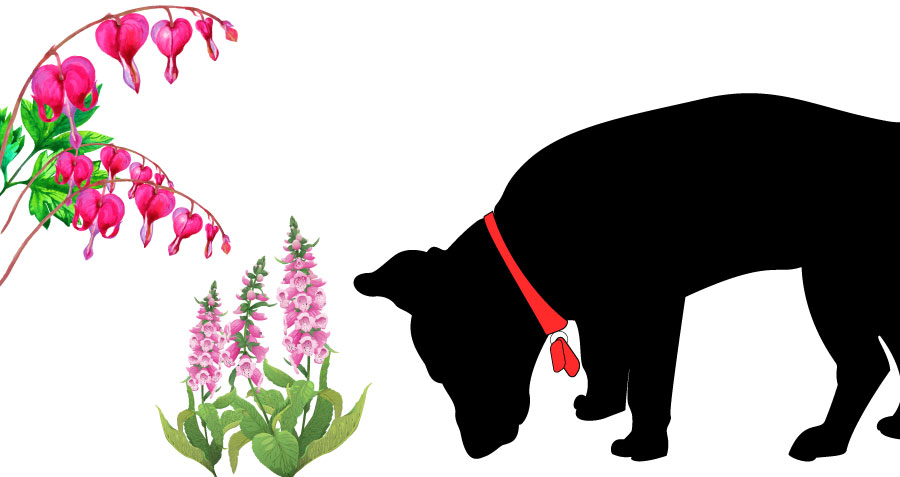Are you looking for new plants to put in your yard and flower beds, but you're not sure what to choose as a dog owner? It's crucial that you do some necessary research before selecting new flowers, shrubs, and trees for your lawn. Without proper information, you could plant something that's dangerous to your dog's health.
Some plants are common in yards for their beauty and hardiness: bleeding hearts and foxglove are two of these attractive options. For local gardeners, these lovely landscaping additions come with possible dangers—at least, they pose a problem for your furry friends. Did you know that both bleeding hearts and foxgloves can be deadly to your dog if ingested? Here's what you need to know about keeping your dog safe.
Toxicity of Bleeding Hearts and Foxglove Bulbs
Both bleeding hearts and foxgloves are dangerous to your dog for different reasons. Bleeding heart plants (Dicentra Formosa) is high in alkaloids and isoquinoline—a convulsant. The roots and foliage of the bleeding heart plant are problematic for dogs, and humans as well—although Fido is more likely to try to make a meal out of a bouquet.
Foxgloves, on the other hand, contain toxins that can affect your dog's heart. These toxins include cardiac glycosides. Interestingly, these toxins are used to create digoxin-a cardiac medication, which can be used by vets to strengthen and regulate a failing heart. For a heart-healthy pet, however, cardiac glycosides can cause severe heart issues.
Know the Symptoms
The best way to protect your pet from potential health problems is to make sure you keep a close eye on them. If your dog ever appears to be rooting around in the garden or eating any foliage whatsoever, stop them and offer water. Bring them inside if they won't stay away from a part of your landscaping. If they appear to be acting abnormally or if you know that they've ingested a plant, call your veterinarian immediately.
Know the symptoms and signs of poisoning if your dog is regularly around foxgloves and bleeding heart plants.
The signs of bleeding heart poisoning are:
- Tremors
- Loss of coordination
- Drooling
- Dermatitis
- Respiratory distress
- Seizures
Remember: ingesting bleeding heart plants could be fatal to your dog, so don't hesitate to call if you believe your dog has eaten one.
The signs of foxglove poisoning are:
- Weakness and collapsing
- Drooling
- Nausea and vomiting
- Abdominal pain
- Frequent urination
- Dilated pupils
- Diarrhea
- Tremors and seizures
- Slowed pulse
- Cardiac arrhythmias
Remember: ingesting foxgloves can be fatal to your dog. Call your vet immediately if you think your dog has gotten into foxgloves. Or if your vet can't be research, contact Pet Poison Control at (888) 426-4435.
Prevention
For most dog owners, it's safest to research every plant before including it in your landscaping. It's never worth your dog's life to plant something that's pleasing to the eye at the expensive of your pet's health and safety.
If you're visiting a friend's backyard or traveling, make sure to keep your pet with you at all times and observe their behavior. Don't let them wander in a strange backyard unsupervised, and don't let them eat any foliage. If you think your dog has eaten a plant of any kind, do your best to identify it quickly and call your vet. There are many different kinds of plants that are toxic to dogs, especially if ingested in large quantities.
It's always better to be safe than sorry.
